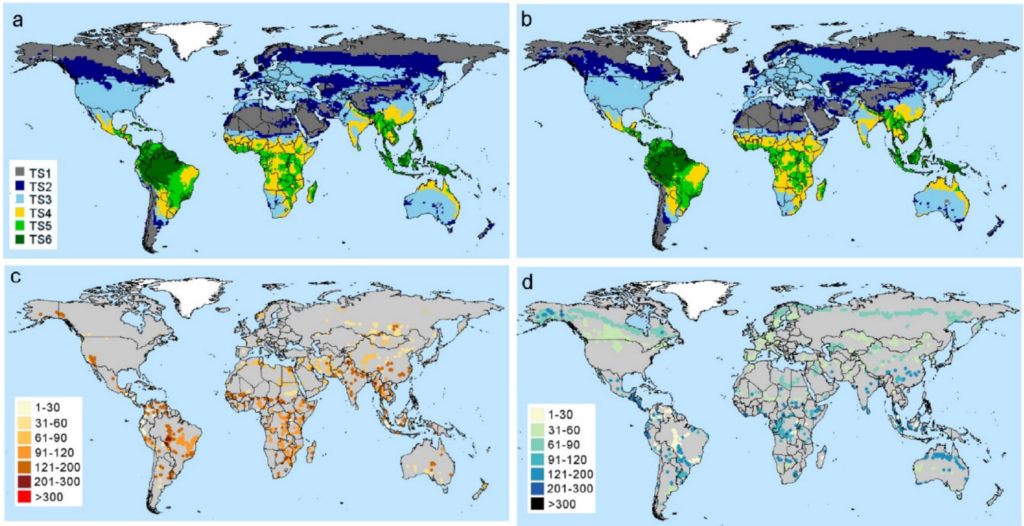Figure – Geographic distribution maps of projected community trophic structures for 1990 and 2018, and projected pressures for 2018. (a) Geographic distribution of reference community trophic structures projected for the reference climate (1990). (b) Geographic distribution of community trophic structures projected for the current climate (2018). (c) Aggregated extinction pressures by guilds derived from transitions in community trophic structures. (d) Aggregated colonisation pressures derived from transitions in community trophic structures.
New modelling framework projects widespread shifts in ecological energy distribution across terrestrial communities
A study published in the Journal of Biogeography by Manuel Mendoza and Miguel B. Araújo introduces a new framework to model how climate change is reshaping the trophic organisation of terrestrial animal communities at a global scale. The framework builds on the concept of community trophic structures, developed in previous studies (e.g., Mendoza & Araújo 2019, 2022, González-Trujillo et al. 2025). By analysing the distribution of over 15,000 mammal and bird species across nine trophic guilds, the authors reveal that climatic changes will not only alter species ranges but also transform the energetic configuration of ecosystems.
The study employs Community Trophic Structure Models (CTSMs), a modelling approach that captures how climate controls the number of species supported by each trophic guild within a community. Unlike traditional species distribution models (SDMs), which focus on the responses of individual species to environmental variables, CTSMs integrate trophic relationships to infer shifts in community-level energy flows.
Using climate projections under high (SSP3-70) and extreme (SSP5-85) emission scenarios, the study identifies two broad patterns of trophic reorganisation. First, extinction pressures are expected to intensify in tropical and subtropical regions, especially among specialist guilds such as frugivores, specialist insectivores and nectarivores. Second, colonisation pressures are projected to increase in temperate, boreal and high-altitude regions, favouring generalist guilds such as plant-invertivores and granivores.
By the end of the century, these dynamics are expected to result in a significant homogenisation of trophic structures across biomes — a process with potential consequences for ecosystem function and biodiversity conservation. The authors frame these patterns within a self-organisation perspective, interpreting ecological communities as energy-regulated systems whose trophic configuration adjusts to changes in climate-driven primary productivity.
The results underscore the value of incorporating CTSMs into biodiversity assessments, not as replacements for SDMs but as complementary tools that offer additional insights into the structural and functional consequences of global change. As noted by the authors, “Species respond not only to climate itself, but also to changes in the trophic structure of the communities they are part of. Anticipating these reorganisations is crucial for understanding biodiversity dynamics in the Anthropocene.”
📖 Full citation: Mendoza, M., & Araújo, M. B. (2025). Trophic Reorganisation of Animal Communities Under Climate Change. Journal of Biogeography. https://doi.org/10.1111/jbi.15105




